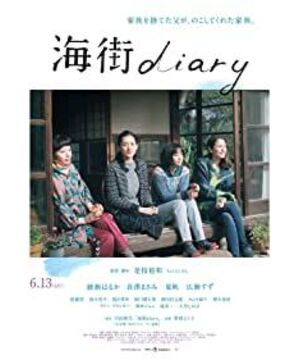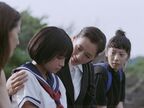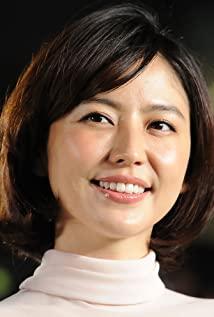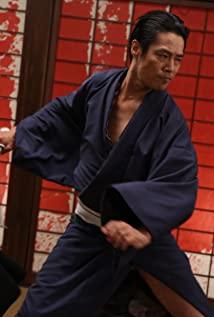door closed and the train started. Asano waved his hands all the way, convinced of their reunion.
It is Hirokazu-eda's new work "Sea Street Diary" adapted from the representative work "Sea Street Diary" by cartoonist Yoshida Akiyo. Undoubtedly, it was Hirokazu Koreeda who took over the manga filming work again after "Air Doll" (2009), apparently finding a long-lost strong resonance in the original work. The trivialities of the family, divorced parents, injured children, and siblings with different personalities, all of which are as familiar and real as those experienced by Hirokazu Koreeda. He was rescued from the posturing and self-pity of Gu Ying's "Like Father Like Son". Of course, after some adaptations, "Sea Street Diary" finally got out of Yoshida's track and slipped into the control of Hirokazu-eda. From the story itself to the way of narration, there are traces of Hirokazu-eda.
It is Hirokazu-eda's narrative method that is very distinctive. This is the subtlety of "Haijie Diary", and it is also an inheritance and retrospect of the director himself to his predecessor "Never Stop Walking" (2008). From the beginning to the end of the film, there is not a large section about the former situation, but the family history is constantly leaking out in the process of the development of the plot, making it a small phrase in the dialogue of the characters; the characters often talk and then stop talking. Say no more, this creates a very elegant sense of suspense and a strong sense of realism. After all, the truth of life never pours out like a waterfall in Hukou, nor is it like a gurgling spring. At the same time, the blank treatment of the blockbuster is also completely in line with the traditional oriental aesthetic concept, leaving an endless aftertaste and room for understanding.
The creation of a sense of reality is of course not limited to screenwriting methods with personal characteristics and skills. It was Hirokazu Kore-eda's way of training the actors that also greatly strengthened the interaction between the actors. The youngest heroine, Hirose Sisi, has never read the script since the start of filming, and all performances are based on the immediate reactions of the actors; some improvised short paragraphs are simply transformed from the actors' real actions on the set, so it can be seen that no matter how powerful it is As a screenwriter, it is better to draw nutrients directly from life.
But at the same time, "Haijie Diary" is a movie that is too unreal and too dreamy. In the words of some reviewers, it's simply "sweet enough". The main reason why it's so sweet and greasy is probably that the four heroines are too beautiful, and the whole story is too natural. Although the past misfortunes have been accumulating between everyone's brows, they have never had a big fight from beginning to end. A drop of dog blood. Life flows slowly between life and death, eating and drinking, even if it is a love and a breakup that should be vigorous, it just turns into a pot of sake, a smile, a ride, and a view of the sea, as if completely. It melts; the camera moves silently here, so that the whole film is in a very subtle rhythm.
This is reminiscent of the unforgettable works of Ozu, the master of family drama. From his perspective, everyone has a smile on their faces, and every wine glass is a joy. However, Ozu's film is about marriage, funeral, birth, old age, sickness and death. In the final analysis, it is the disintegration of the family and life. The situation is the state of the world of boat travel and public action, and it is Ozu's own understanding of the sadness of things. It was Hirokazu Koreeda who didn't have such a height, or rather, he never thought of following in Ozu's footsteps. He just wanted to "reconcile" his family, and despite the short-term vulnerability, it was Hirokazu-eda who wanted to capture the beauty of the moment.
This passion for moments and subtleties comes from Japan's classical culture, but also from Japan's national character. To a certain extent, Yasujiro Ozu and Hirokazu Kazueda are two sides of the same world, the latter to capture, the former to accommodate; the latter to talk about the moment, the former to talk about eternity; the latter is an out-and-out mortal, the former It is the omniscient god. Just like Chuang Tzu's combination of Chao Mun and Hui Shuo, man and heaven and earth are one. If so, we can see all kinds of seemingly ordinary but meaningful images in "Haijie Diary", such as funerals where life and death overlap and fleeting fireworks, just in line with Japan's perception of "life is as gorgeous as summer flowers" "Death is like the quiet beauty of autumn leaves"; plum wine and sea cat cafeteria are an excellent contrast, the former symbolizes the continuation of blood and unbreakable family affection, while the latter describes the fragility of life with the transfer of the cafeteria and family disputes. It can be said that every simple plot is worth pondering carefully, because in such a country and such expressions, only daily life is sacred, only blandness is taste, and only tranquility is moving.
On the aesthetic level, Haijie Diary is the most impressive, and there are countless cumbersome etiquette and almost false courtesy and sincerity. Gentle and gentle words and honorifics such as "いただきます" and "ただいま" are pervaded throughout the film, making every return home and meal feel like a long-prepared ritual. The two lies about father and food in the film, which seem trivial, are in fact the tip of the emotional iceberg floating in the sea of Asano's memories. All of this is not about hypocrisy or deception, but about supreme respect and piety, the rare care and understanding between people, and the kindness and understanding of people who are unwilling to transfer their pain to others. "Haijie Diary" is sweet, probably in such an almost ideal state; those people are not even living, and their living methods are far more delicate than life itself.
For me, the most beautiful part of the film is not that the four of them set off fireworks together, but the scene where Ayase Haruka and Hirose Suzuki sit and taste plum wine together. The two seem to have already become real sisters, not only teasing each other about each other's age, but also playing the "vicious" game of tying the villain. The only "vicious" in the whole film is more heart-warming than the real beauty, as evidenced by the kinship of sisters and the warmth of blood.
"Haijie Diary" can probably become the best of the year for many fans, and even won the top ten of the old Japanese film magazine "Movie Xunbao". There is basically no suspense. Speaking of the film of the year, it is reminiscent of two other works at the Cannes Film Festival in 2015, one is the best film "Youth" at the European Film Festival, and the other is the first of the year selected by the French "Cinebook" "my mother". All three movies are a bit of a crash, and all talk about death in some way. Sorrentino treats death and aging as philosophical propositions, just as he did when he talked about beauty in Flaubert-esque "City of Absolute Beauty" two years ago, which is simple and powerful. "My Mother" pushes the details of dying and the attitude of children towards mothers to the extreme. Anyone who has experienced similar experiences will feel the amazing observation ability of a director.
"Sea Street Diary" belongs only to Japan, only to Hirokazu Koeda. The immature face of Hirose Sisi, who is full of life's secrets, the aroma emanating from the delicious food in "Never Stop", the broken family that lost its parents like "Nobody Knows", It is all of Dongying.
View more about Our Little Sister reviews











